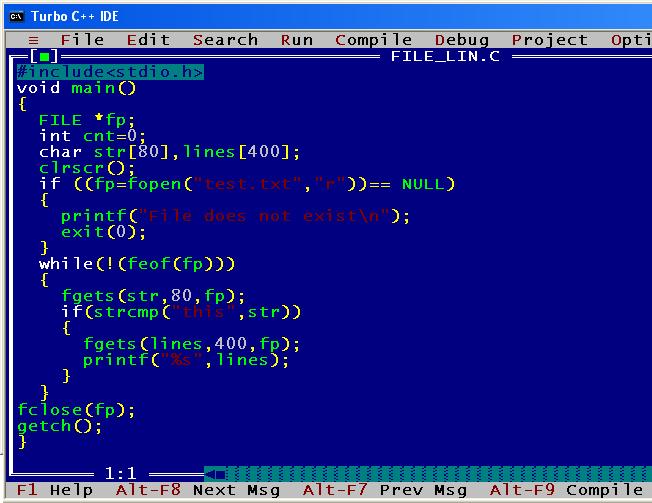

- C file extension how to#
- C file extension install#
- C file extension full#
- C file extension software#
- C file extension code#
Some file systems implement filename extensions as a.
C file extension full#
A filename extension is typically delimited from the filename with a full stop (period), but in some systems it is separated with spaces. RIB iTWO supports XML technology as well as ifcXML. A filename extension, file extension or file type is an identifier specified as a suffix to the name of a computer file.The extension indicates a characteristic of the file contents or its intended use.

Other key features include clash detection, quantity tracking based on design plan and automatic extraction of cost estimation based on design. The system gathers information from different 3D data sources and integrates them to form a system-generated graphical own-object model. RIB iTWO uses the Building Information Modeling (BIM) approach for project control, virtual planning and simulation of production processes. The 5D model lets the users track the geometric model, time (virtual construction site) and resource control in all project phases on screen.
C file extension software#
Using Construction Process Integration (CPI), the software integrates CAD and commercial ERP systems, to produce a 5D planning model. RIB iTWO is a construction and engineering software that combines traditional construction planning with trail-blazing 5D planning. C for C++ is no longer supported.) Files in the src directory should not be hidden (.
C file extension install#
Microsoft Windows users who need to create these engineering and construction projects and to implement support into their systems for these CCP files can install the RIB iTwo application to do this. h for headers, also for C++ or Fortran 9x include files. For more information, see Project and Solution Files.
C file extension code#
The RIB Import Converter software is an applet implemented into the RIB iTwo application, and this specifically uses the data stored in these CCP files. Shared Items project for sharing code files between multiple C++ projects. External data fields may come from XLS or TXT sources among other documents in supported formats, while internal data fields used in a CCP file are from internal files encoded in the iTwo XML format. The data stored in these CCP files includes code developed as a conversion profile used for internal and external data field mapping functionalities. The RIB iTwo software is one of these construction and engineering design programs, and this application is classified as CAD software. Engineering and construction industries implement design applications developed for creating digital presentations of construction and engineering designs.
C file extension how to#
ccp extension and are referenced by the RIB iTwo program. C++: How to extract file extension from a path string using Boost & C++17 FileSystem Library Leave a Comment / Boost Library, C++ 11, C++17, FileSystem / By Varun In this article we will dicuss different ways to extract extension from a given path string using different technique i.e. " Listen very carefully, I will say this only onceįor more information check :help new-filetype.Files in the CCP format are appended with the. Answer (1 of 4): Since the C language sources usually have the extension '.c' and '.h', in the beginning it was common for C++ source files to share the same extensions or use a distinct variation to clearly indicate the C++ code file. Below is a list of common Windows file name extensions and formats.
It is necessary in order to avoid multiple and unnecessary loading of this file, and it is inherited from the base file ($VIMRUNTIME/filetype.vim): " Vim support file to detect file types In File Explorer under View, in the Show/hide group, select the File name extensions check box. The did_load_filetypes shouldn't cause you any problems it would only require a Vim restart after it is changed. In the 'runtimepath' option) and add the following lines: " my filetype file The preferred approach is to create a ~/.vim/filetype.vim, as mentioned in :help 43.2 and explained in Vim FAQ 26.8:Ī better alternative to the above approach is to create a filetype.vimįile in the ~/.vim directory (or in one of the directories specified


 0 kommentar(er)
0 kommentar(er)
